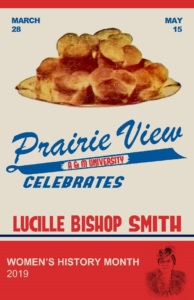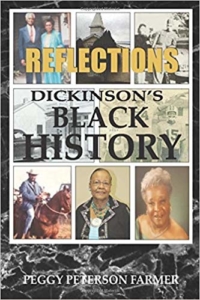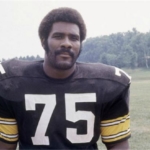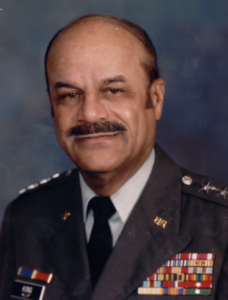A Secret 1950s Strategy to Keep Out Black Students
Long-hidden documents reveal the University of Texas’s blueprint for slowing integration during the civil-rights era.
Photo: Heman Sweatt (right) at the University of Texas (Joseph Scherschel / Getty)
(The Atlantic) In the summer of 1955, administrators at the University of Texas at Austin had a problem: The U.S. Supreme Court’s Brown v. Board of Education decision, handed down the previous year, required educational institutions to integrate their classrooms. But the regents overseeing the state university system’s flagship campus, the old alumni who formed the donor base, and the segregationist political forces that pulled the purse strings were all determined to find ways to keep African Americans from stepping foot on campus.
UT had no conspicuous blocking-the-schoolhouse-door moment. A series of documents in the UT archives, many of them marked confidential, suggests that administration officials took a subtler approach: They adopted a selective admissions policy based around standardized testing, which they knew would suppress the number of African American students they were forced to admit. (more)
The Forgotten History of the Native Americans Who Helped the Underground Railroad

“The Underground Railroad” marker on May 16, 2014 in Columbus, Ohio. (Photo By Raymond Boyd/Getty Images)
(Time) In an interview conducted in 2002, the late Helen Hornbeck Tanner, an influential historian of the Native American experience in the Midwest best known for her magisterial Atlas of Great Lakes Indian History (1987), reflected on the considerable record of “coexistence and cooperation” between African Americans and Indians in the region. According to Tanner, “[an] important example of African and Indian cooperation was the Indian-operated Underground Railroad. Nothing about this activity appears in the historical literature.”
Tanner’s assertion is largely true. Native American assistance to freedom seekers crossing through the Midwest, then often called the Old Northwest, or seeking sanctuary in Indian villages in the region, has largely been erased from Underground Railroad studies. (more)
“Lucille Smith: Biscuits and Business” exhibit closing
 The very popular “Biscuits and Business: The Legacy of Lucille Smith and Southern Black Chefs” exhibit will be closing next week, with the final day for viewing set for Oct. 2.
The very popular “Biscuits and Business: The Legacy of Lucille Smith and Southern Black Chefs” exhibit will be closing next week, with the final day for viewing set for Oct. 2.
The School of Architecture artist in residence Marlon Hall, and Assistant Professor of Practice, Ann Johnson collaborated with TIPHC Director Michael Hurd to co-curate the exhibit dedicated to the legacy of chef and entrepreneur Lucille Bishop Smith, who studied and later taught at Prairie View A&M and is noted as the first black businesswoman in Texas.
In 1937, Lucille Smith was invited to design a Domestic Service Training Program for professors and instructors at Prairie View. She went on to develop the first college-level Commercial Foods and Technology Department that was intelligently paired with an apprenticeship program. Smith was the first black woman to join the Fort Worth Chamber of Commerce and for several years her chili biscuits were served on American Airline flights and were also served at the White House. First Lady Eleanor Roosevelt, President Lyndon Johnson and heavyweight boxing champion Joe Louis were among her friends, fans, and customers.
The exhibit features original artwork by Professor Johnson, and two documentary shorts by Mr. Hall. Assistant Professor of Art, Renee Smith produced the graphic designs. Johnson’s sculpture students have created unique pieces for the exhibit, and School of Architecture Shop Supervisor Shannon Bryant assembled an extraordinary team of students that established the architectural foundation of the exhibition.
TIPHC Bookshelf
 Published scholarship on black history in Texas is growing and we’d like to share with you some suggested readings, both current and past, from some of the preeminent history scholars in Texas and beyond. We invite you to take a look at our bookshelf page – including a featured selection – and check back as the list grows. A different selection will be featured each week. We welcome suggestions and reviews. This week, we offer, “Reflections, Dickinson’s Black History,” by Peggy Peterson Farmer.
Published scholarship on black history in Texas is growing and we’d like to share with you some suggested readings, both current and past, from some of the preeminent history scholars in Texas and beyond. We invite you to take a look at our bookshelf page – including a featured selection – and check back as the list grows. A different selection will be featured each week. We welcome suggestions and reviews. This week, we offer, “Reflections, Dickinson’s Black History,” by Peggy Peterson Farmer.
Dickinson is a small town situated in Galveston County, Texas, purchased from the Mexican government by John Dickinson in 1824. In “Reflections,” Dickinson native Peggy Farmer offers an image-rich account of the city’s African-American heritage from the mid-1800s. The book also includes first person colorful accounts of what it was like growing up in Dickinson.
The African American families began to migrate to this small town through a slave owner, General E.B. Nichols, in the mid 1800s. These families came from Louisiana, Mississippi, Texas, and Alabama. They pooled their money together and purchased property from a man named John Moore. Then they divided it among themselves. This small subdivision was named Moore’s Addition. This was the only area where blacks were originally allowed to live in Dickinson.
Many families came in search of jobs, and they built the interurban track, which served as transportation to and from Houston–Galveston. Many blacks worked in Galveston in the cotton exchange. Others worked in the fields—picking strawberries and vegetables. During that time, Dickinson was the strawberry capital of the USA.
Those families, when out of work had “pound” parties where they would share what they had with those who were more in need. There wasn’t any welfare or unemployment insurance. There was a fund from the government where the unemployed were paid, called “pennies.” However, for the most part, the African American residents depended on each other and the “can do” spirit within them to overcome great odds and adversity.
This Week in Texas Black History
Sept. 24
On this day in 1946, football great Charles Edward Greene, “Mean Joe”, was born in Temple, Texas. Greene starred at Dunbar High School, then became an All-American lineman in 1968 at North Texas State University. Greene (6-4, 275 pounds) was the Pittsburgh Steelers No. 1 pick in the 1969 National Football League draft and was a dominant force on the Steelers’ four Super Bowl championship teams the 1970s as leader of their “Steel Curtain” defense. He was NFL Defensive Rookie of the Year in 1969, played in 10 Pro Bowls, was All-NFL five times, and NFL Defensive Player of the Year in 1972 and 1974. He was inducted to the Pro Football Hall of Fame in 1987.
Sept. 25
John Quill Taylor King was born on this day in 1921, in Memphis, Tenn. King attended L.C. Anderson High School in Austin, graduating at age 15, and received a mathematics degree from Fisk University and a Ph.D. in mathematics and statistics from UT-Austin in 1957. King was a faculty member at Huston-Tillotson University and rose to become the school’s dean and then president in 1965 and chancellor in 1987. He entered the U.S. Army during WWII as a private, but earned officer status and retired as a major general in 1983. Upon leaving active duty, King became the Army Reserves’ first black general officer. With the Texas State Guard, he was promoted to Lt. Gen. in 1985. His mother, Alice Clinton Woodson, was a direct descendant of Thomas Woodson, son of slave Sally Hemings and her owner, Thomas Jefferson. A licensed mortician, King was also president of King-Tears Mortuary, Inc. in Austin.
Sept. 28
On this day in 1941, Charley Taylor, was born in Grand Prairie, Texas. A multi-sport star at Dalworth High School, Taylor was all-state in football and track. At Arizona State University, he was an All-American in football (running back and defensive back), but also excelled in baseball. Taylor was the third overall pick in the 1964 NFL draft by the Washington Redskins and was named National Football Conference Rookie of the Year as a running back. He was switched to wide receiver two seasons later and led the league in receiving three times. He retired after the 1977 season as the NFL’s all-time leading receiver with 649 catches for 9,110 yards and 79 touchdowns. He was inducted to the Pro Football Hall of Fame in 1984.
Sept. 30
John “Johnny” Royce Mathis, singer, was born in Gilmer, Texas on September 30, 1935, the fourth of seven children born to Clem, a chauffeur and handyman, and Mildred, a maid. The Mathis family moved to San Francisco, California‘s Fillmore District when Mathis was a young child. Mathis became a star basketball player and high jumper in track and field at San Francisco State University. However, he also received voice training in classical music, including opera, and began to focus on his music career. In 1956, he recorded his first hit, “Wonderful! Wonderful!” which sold more than a million records. That was soon followed by “It’s Not for Me to Say,” “Chances Are,” and “The Twelth of Never.” In 1958, Mathis’s Johnny’s Greatest Hits album was the first greatest hits album released in the music industry.
Blog: Ron Goodwin, Ph.D., author, PVAMU history professor
Ron Goodwin is an assistant professor of history at Prairie View A&M University. Even though he was a military “brat,” he still considers San Antonio home. Like his father and brother, Ron joined the U.S. Air Force and while enlisted received his undergraduate degree from Texas Lutheran University in Seguin, Texas. After his honorable discharge, he completed graduate degrees from Texas Southern University. Goodwin’s book, Blacks in Houston, is a pictorial history of Houston’s black community. His most recent book, Remembering the Days of Sorrow, examines the institution of slavery in Texas from the perspective of the New Deal’s Slave Narratives.
Recent Posts
We owe them reverence
Given the infinite nature of the Universe, four hundred years is merely a blink of the eye. But the human existence is not infinite. We understand that from the moment we take our first breath out of our mothers’ wombs, our journey begins towards that moment when we take our last breath. So, for us whose existence is finite, we consider four hundred years a mighty long time. We really know very little about those…(more)
The beginning of the end: D-Day
In June 1944, Allied forces began their assault not only on the beaches of Normandy, but on Nazism itself. Dubbed Operation Overlord, the amphibious exercise is legendary as the extraction of France from German control and the beginning of the end of Adolph Hitler’s plans for a thousand year reign of his Aryan master race. The death tolls were staggering on the initial day of the operation. Thousands of Americans gave the greatest sacrifice in…(more)
Submissions wanted
Historians, scholars, students, lend us your…writings. Help us produce the most comprehensive documentation ever undertaken for the African American experience in Texas. We encourage you to contribute items about people, places, events, issues, politics/legislation, sports, entertainment, religion, etc., as general entries or essays. Our documentation is wide-ranging and diverse, and you may research and write about the subject of your interest or, to start, please consult our list of suggested biographical entries and see submission guidelines. However, all topics must be approved by TIPHC editors before beginning your research/writing.
We welcome your questions or comments. Please contact Michael Hurd, Director of TIPHC, at mdhurd@pvamu.edu.




